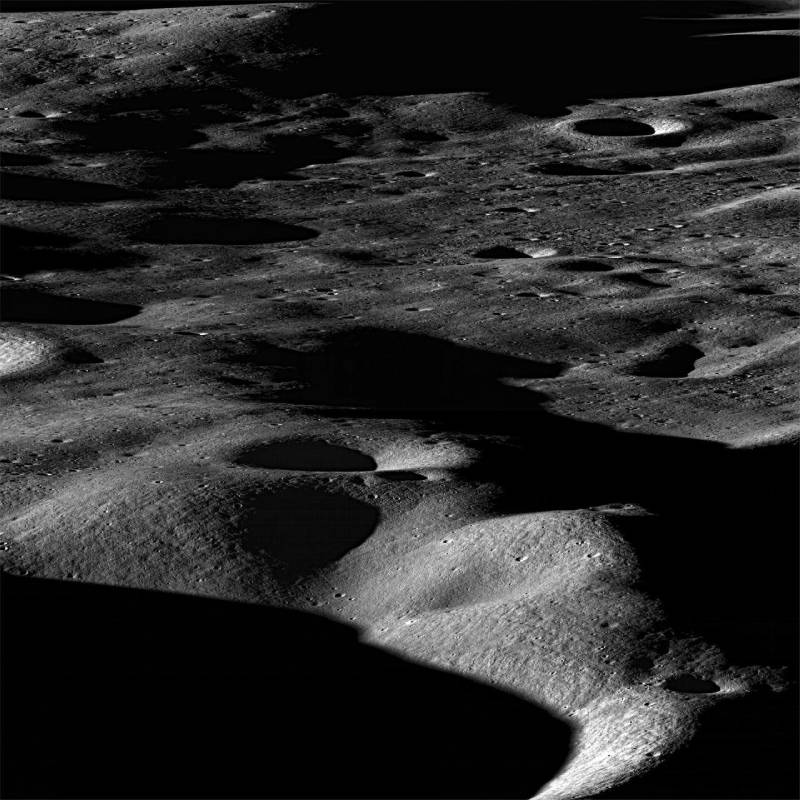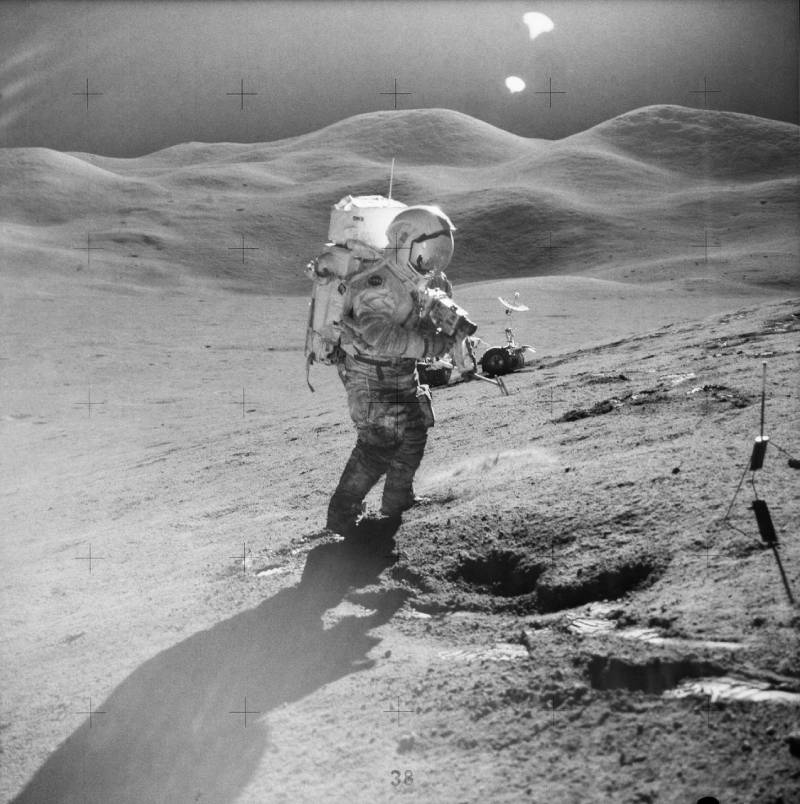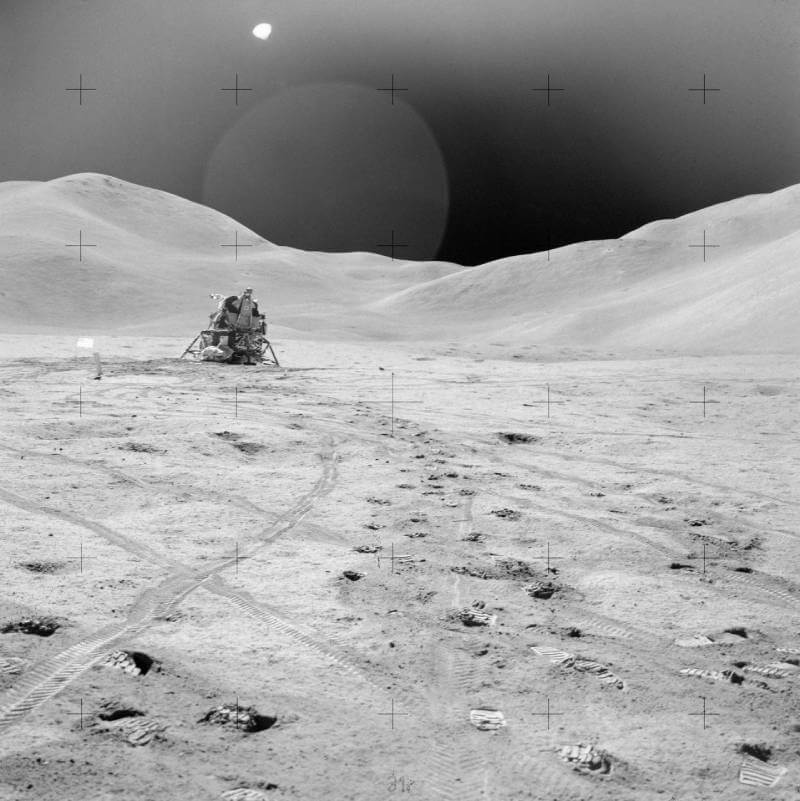While we often associate Earth’s mountains with grand tectonic clashes, lunar mountains tell a different story. The lunar mountains form so fast, in the blink of an eye, formed from the fiery impacts of asteroids and comets. The Moon’s southern polar region houses a number of the lunar mountains, also known as massifs. Researchers speculate that these massifs might connect with the colossal impact basin at the Moon’s South Pole – pole-Aitken basin. Interestingly, this basin is known for being the oldest and largest impact basin on the Moon and solar system. It can be concluded that the lunar mountains formed due to the colossal impact.
How Do You Determine The Elevation of The Lunar Mountains?
Unlike the Earth’s geological processes, where mountain chains through a collision of tectonic plates reshape the crust, mountains on the Moon occur at astonishing speed. Also, don’t expect towering and dramatic peaks when you look up lunar mountains. The Moon’s highest point doesn’t qualify as a hill on Earth – but more of a knob. This feature doesn’t cast an intimidating shadow in its surroundings but possesses gentle slopes. Nonetheless, don’t be fooled by that unassuming appearance – it stands nearly seven miles high – over a mile taller than Earth’s highest Peak, Mount Everest.

Surprisingly, the lack of oceans on the Moon needs a unique approach to determine elevation. Instead of using sea level as a reference point, scientists use lasers and cameras aboard spacecraft to create complex 3D maps of the surface of the Moon. These maps are the basis for determining average elevation, with individual features used concerning this reference. The methodology for defining mountain heights on the Moon has evolved over the years. In the 1960s, the U.S. Army Mapping Service used an elevation reference 1,737,988 meters from the center of the Moon. The Clementine topographic data recently established 1,737,400 meters as the universal datum for measuring lunar heights.
Which Is The Tallest Mountain On The Moon?
Mons Huygens is the Moon’s tallest mountain, three miles above the plains. Reaching approximately 18,046 feet, even more than half Mount Everest’s height. The mountain was named after Christian Huygens, the astronomer who discovered Saturn’s largest Moon, Titan. However, its Peak is not the highest point – Selenean Summit is 35,387 feet above the center of the Moon. Despite this, Mons Huygens remains the highest mountain because the Selenean summit has gentler sloped with a 3-degree average incline, thus falling short of being classified as a mountain.

How Many Mountains Are On The Moon?
There are about 30 Mountains on the Moon. Below are some of the highest mountains:
| Mountain | Height | Diameter | Mountain Range | Origin |
| Mons Huygens | 5.5 km | 40 km | Montes Apeninus | Astronomer, Christian Huygens |
| Mons Hadley | 4.5 km | 25 km | Montes Apenninus | Inventor, John Hadley |
| Mons Bradley | 4.3 km | 30 km | Montes Apenninus | English Astronomer, James Bradley |
| Mons Penck | 4.0 km | 30 km | Solitary Mountain | Geologist, Albrecht Penck |
| Mons Hadley Delta | 3.9 km | 25 km | Montes Apenninus | John Hadley |
| Mons Blanc | 3.8 km | 25 km | Montes Alpes | An Alpine Peak, Mont Blanc |
| Mons Wolff | 3.8 km | 35 km | Montes Apenninus | Baron Christian Von Wolff |
| Mons Ampere | 3.3 km | 30 km | Montes Apenninus | Phycist, Andre-Marie Ampere |
| Mons Pico | 2.4 km | 25 km | Solitary Mountain | Me and Peak in”iish” |
| Mons Piton | 2.4 km | 25 km | Isolated Mountain | Tenerife Peak Island |
| Mons Vitruvius | 2.3 km | 15 km | Montes Taurus | Crater Vitruvius |
| Mona La Hire | 1.5 km | 25 km | Solitary Mountain | Phillipe de la Hire |
| Mons Vinogradov | 1.3 km | 25 km | Solitary Mountain | A chemist, Alexander P. Vinogradov |
| Mons Maraldi | 1.3 km | 15 km | Solitary Mountain | Crater Maraldi |
| Mons Rumker | 0.9 km | 70 km | Isolated Lunar Dome | Karl L. C. Rumker |
Additionally, there are also smaller mountains on the lunar surface, including:
- Mons Agnes – 1 km
- Mons Andre – 10 km
- Mons Dilip – 2 km
- Mons Esam – 8 km
- Mons Argaeus – 50 km
- Mons Delisle – 30 km
- Mons Dieter – 20 km
- Mons Ardeshir – 8 km
- Mons Ganau – 14 km
- Mons Usov – 15 km
- Mons Herodotus – 5 km
- Mons Moro – 10 km
- Mons Gruithuisen Gamma – 20 km
To Wrap Up
From the above table, you notice that some mountains have mountain Ranges, but those are not all; there are more on the Moon, including:
- Montes Carpatus – 361 km
- Montes Alpes – 281 km
- Montes Apenninus – 401 km
- Montes Archimedes – 163 km
- Montes Agricola – 141 km
- Montes Caucasus – 465 km
- Montes Recti – 90 km
- Montes Jura – 422 km
- Montes Haemus – 560 km
- Montes Piphaeus – 189 km
- 11. Montes Taurus – 172 km
- Montes Spitzbergen – 60 km
- Montes Teneriffe – 182 km
- Montes Rook – 791 km

